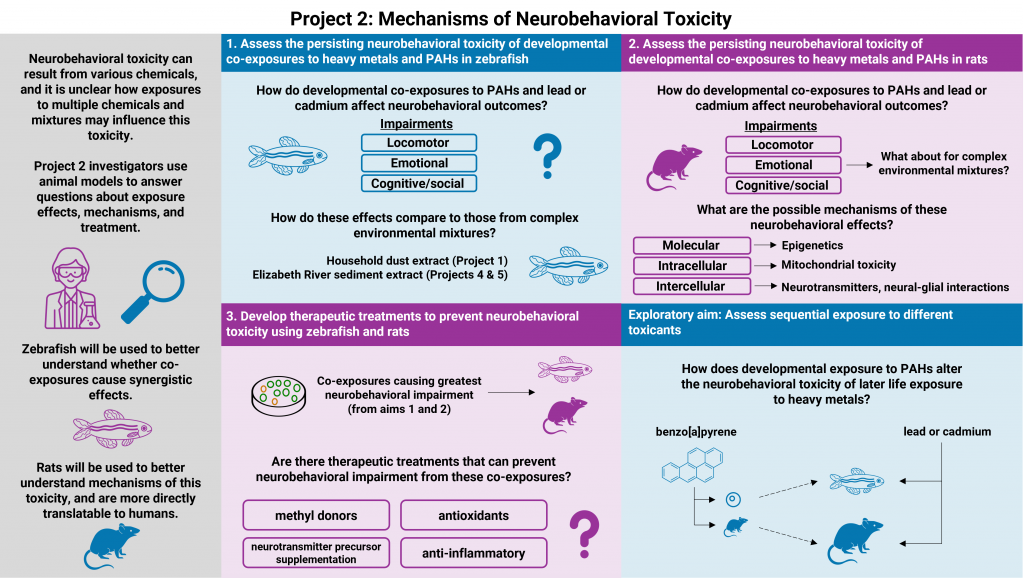Project 2 – Persisting Neurobehavioral Dysfunction Caused by Interacting Toxicant Exposures During Development: Mechanistic and Treatment Studies with Zebrafish and Rats
Project Leaders
Trainees
Goals and Importance of Research
There is ample evidence linking early developmental exposures to various individual environmental contaminants, and neurobehavioral impacts later in life. However, people are not exposed to a single chemical in isolation, but to mixtures. This study will look at multiple potential mechanisms for neurobehavioral impacts by using zebrafish and rats. Zebrafish will help assess varying contaminant doses and mixtures, while rats will be used to study key impacts that are more directly relatable to humans. The study of these mechanisms and their specific neurobehavioral effects can improve understanding of risk and help to develop treatments that limit health impacts.
Novel Aspects of Research
- Determine mechanisms of neurobehavioral impairments from chemical mixture exposures across a biological spectrum: from molecular, to intracellular, to intercellular, to organismal.
- Expand mechanistic studies to include microglial regulation of of inflammatory processes as well as DNA methylation and mitochondrial function (with Project 3) will help provide a more comprehensive understanding of persisting neurodevelopmental dysfunction.
Project Aims
- With zebrafish, determine mutually potentiating neurobehavioral toxicity of interacting developmental exposures to heavy metal and PAHs toxicants and complex mixtures.
- Determine in rats mutually potentiating effects of developmental interacting exposures to heavy metals and PAHs in producing lifelong locomotor, emotional and cognitive dysfunction and mechanisms for these effects.
- Develop therapeutic treatments to prevent neurobehavioral toxicity.
- Exploratory Aim: Determine adverse effects of sequential exposures to different toxicants
Project 2 News

Current and former DUSRC investigators awarded Toxicological Sciences ‘Paper of the Year’ for study on paternal preconception cannabis exposure
Theodore Slotkin Edward Levin Frederic Seidler Current Duke Superfund Project 2 Principal Investigator Ed ...

Duke Superfund Research Center awarded 5-year $11.7 million grant for continued environmental health and exposure research
The Duke Superfund Research Center is proud to announce our renewed 5-year grant from ...








